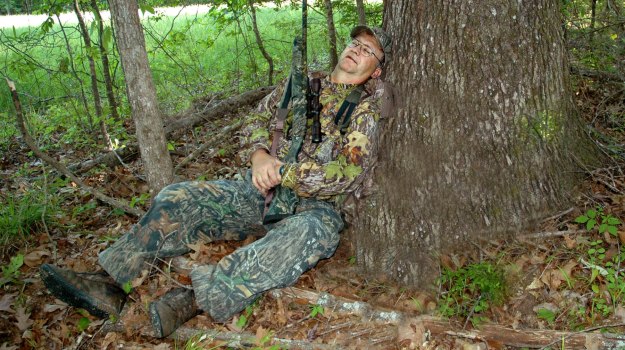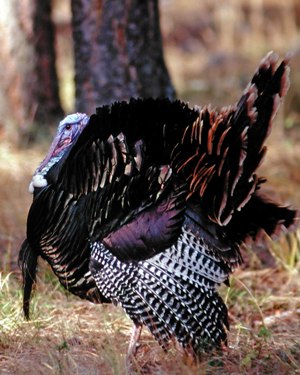
Editor’s Note: Ernie Calandrelli is the director of public relations and advertising for Quaker Boy Game Calls in Orchard Park, New York and a longtime Mossy Oak enthusiast. I’ve hunted with Ernie over the years, and he’s one of the best turkey hunters I’ve ever met, so I wanted to know how he takes tough turkeys.
There’s one thing I know for certain. If a turkey hunter tells you he’s never fallen asleep on a hunt, you know one of several things. He hasn’t been turkey hunting very long, he doesn’t hunt turkeys all day, or he’s lying to you. One of the most-terrifying things a turkey hunter has to deal with is being sound asleep and hearing a turkey drumming right behind him. Even if you’re awake and haven’t heard that turkey coming in, now he’s got you. There’s nothing you can do at this point that will be right. You know you have to fight the instinct to turn around and look at that turkey. You keep telling yourself, “If I turn slowly, I can see the turkey before he sees me.” Wrong! If you hear a turkey spitting and drumming behind you, sit still, and depend on your Mossy Oak camouflage to keep you invisible. The only thing you can move is your eyeballs. When you hear that spitting and drumming, pinpointing exactly where that turkey is becomes very difficult. This scenario generally happens late in the morning. The turkey coming in silently from behind you is an opportunity for you to really test your patience. You have to sit there and hope the turkey will walk in front of you. The only right thing to do when you’re caught in this situation is to not move. Then wait and see if he will walk in front of you, so you can get your gun up and take a shot.
 Another terrifying situation is to hear a turkey drumming and know he’s really close, but then the woods go silent, and you don’t know where he is. Your brain is telling you, “Get-up and see if you can see the turkey, or change locations and call to him again.” But the worst thing you can do is spook that gobbler. If you don’t spook him, you may be able to call him in within gun range an hour or two later. That gobbler knows a hen has been calling to him in that location. If you wait an hour or two and call to him again, that gobbler may think the hen has wandered off and returned to that spot. After I’ve waited 20 or 25 minutes, I call softly with clucks and purrs to see if I can get the gobbler to spit and drum again or gobble, so I know his location. I’ll look at my watch when the turkey goes silent and decide to stay in that spot for about an hour before getting up and moving. Within 45 minutes to an hour, that turkey probably has gone somewhere else. The one thing I know about turkey hunting is that patience kills turkeys. The longer you can sit there after a turkey goes silent, the better your odds are for not spooking him and possibly taking him.
Another terrifying situation is to hear a turkey drumming and know he’s really close, but then the woods go silent, and you don’t know where he is. Your brain is telling you, “Get-up and see if you can see the turkey, or change locations and call to him again.” But the worst thing you can do is spook that gobbler. If you don’t spook him, you may be able to call him in within gun range an hour or two later. That gobbler knows a hen has been calling to him in that location. If you wait an hour or two and call to him again, that gobbler may think the hen has wandered off and returned to that spot. After I’ve waited 20 or 25 minutes, I call softly with clucks and purrs to see if I can get the gobbler to spit and drum again or gobble, so I know his location. I’ll look at my watch when the turkey goes silent and decide to stay in that spot for about an hour before getting up and moving. Within 45 minutes to an hour, that turkey probably has gone somewhere else. The one thing I know about turkey hunting is that patience kills turkeys. The longer you can sit there after a turkey goes silent, the better your odds are for not spooking him and possibly taking him.
Day 3: Taking Gobblers when There’s No Noise with Ernie Callendrelli
Tomorrow: Ernie Callandrelli on Taking the Missed Turkeys



























